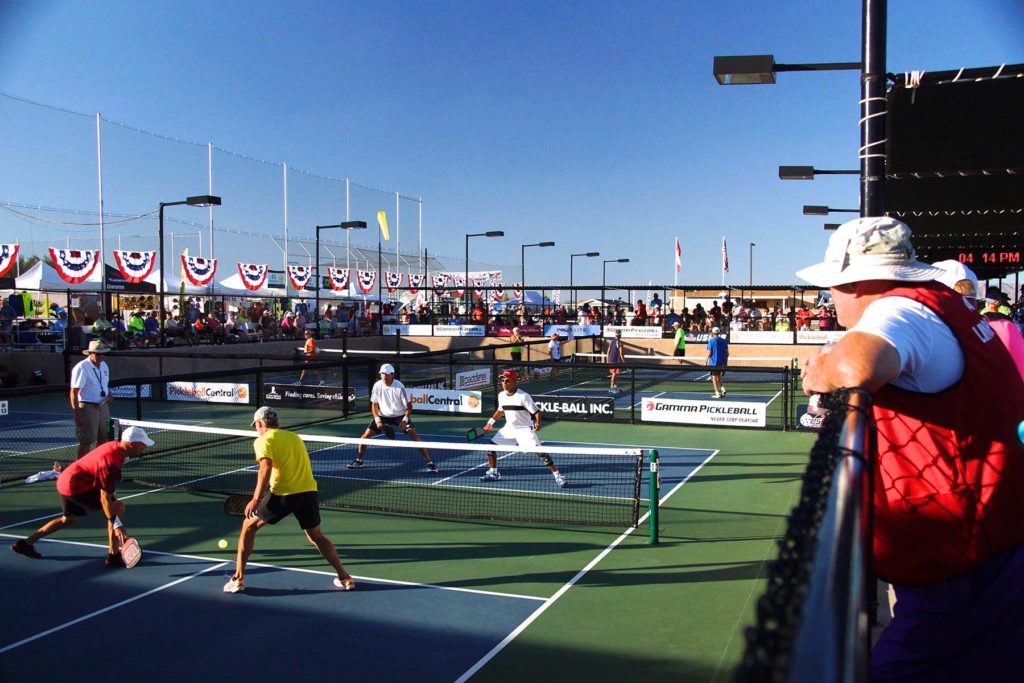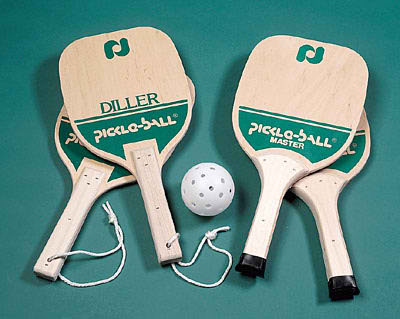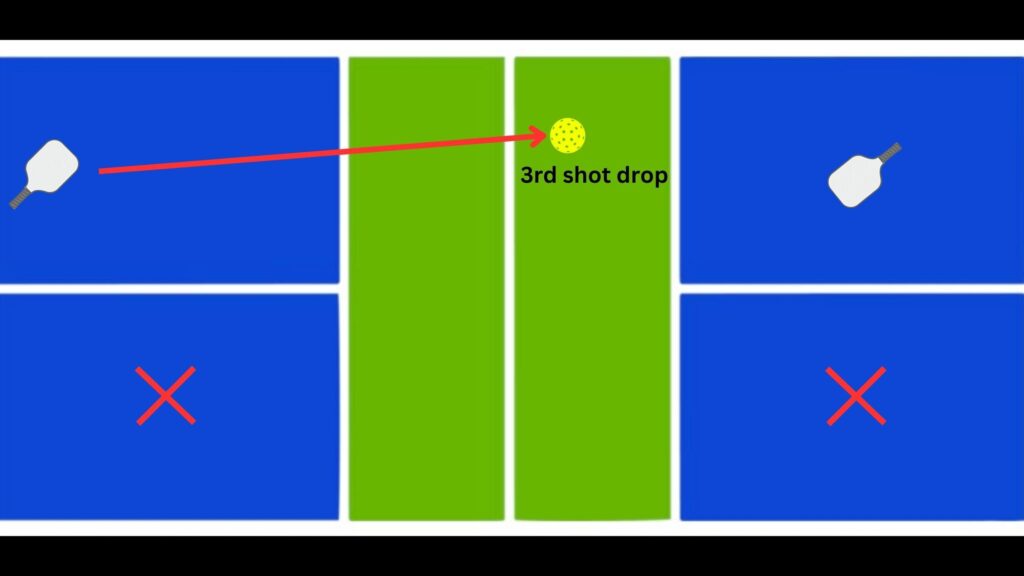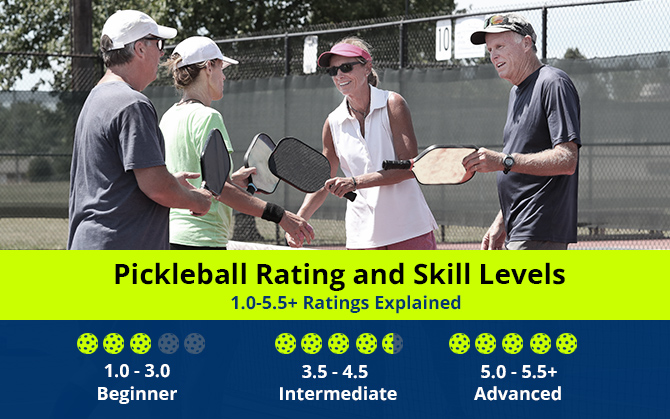The original purpose of the game Pickleball was to provide a fun and engaging recreational activity for all ages. Developed in the mid-1960s in the United States, Pickleball combines elements of tennis, badminton, and ping pong to create a unique and fast-paced game that can be enjoyed by players of varying skill levels.
The game was originally invented as a way to entertain family and friends and has since grown in popularity worldwide. With its simple rules and equipment requirements, Pickleball has become a beloved pastime for many, offering both physical activity and social interaction.
Whether you’re a beginner or a seasoned player, Pickleball provides a great way to stay active and have fun.

Credit: usapickleball.org
History And Origins
Pickleball, a popular paddle sport that combines elements of tennis, badminton, and ping pong, was created in the mid-1960s by three dads looking for a game their families could enjoy together. The game has since gained tremendous popularity worldwide, attracting players of all ages and skill levels. To truly appreciate the game, it’s essential to delve into its history and origins.
Creation Of Pickleball
In an innovative moment of inspiration, Joel Pritchard, a congressman, and his friend Bill Bell decided to invent a game to keep their bored children entertained. They improvised by using a badminton court to create the first version of pickleball.
- Joel Pritchard enlisted the help of Barney McCallum, a friend and fellow inventor, to refine the game and develop official rules.
- They used a perforated plastic ball, similar to a whiffle ball, and constructed paddles out of plywood.
- The game was initially named “pickleball” after the Pritchards’ cocker spaniel, Pickles, who loved chasing after the ball.
Inspiration And Development
The creation of pickleball was heavily influenced by the desire to adapt existing sports to fit a smaller space, allowing for easy family participation. Tennis was too challenging for young children, while badminton required a larger area. Thus, pickleball was born.
| Influences on Pickleball Development | Description |
|---|---|
| Tennis | Inspired the use of a net and similar scoring system in pickleball. |
| Badminton | Influenced the use of paddles and the concept of hitting a ball back and forth. |
| Ping Pong | Introduced the idea of a smaller playing area and the quick-paced nature of the game. |
The game quickly spread to community centers and retirement homes, where it gained popularity among adults due to its low-impact nature and social aspects. As pickleball gained a following, it began to evolve and develop into the game we know today. Official rules and regulations were established, and tournaments and leagues were formed, creating a competitive aspect to the sport.

Credit: www.pickleballhouston.com
Pickleball Rules
Introductory paragraphPickleball Rules: Understanding the rules of pickleball is essential to fully enjoy and excel in the game. From court dimensions to serving techniques, each element contributes to the fast-paced and engaging nature of pickleball.
Court And Equipment
Court: A pickleball court is a rectangular area with dimensions of 44 feet by 20 feet for doubles and 44 feet by 17 feet for singles, divided into left and right service courts by a net. The court is marked with baselines, non-volley zones, and a centerline.
Equipment: Players use paddles to hit a perforated ball over the net. The paddle must not exceed 24 inches in length and 8 inches in width. The ball must have a diameter of 2.874 inches to be regulation.
Serving And Scoring
Serving: The serve in pickleball must be hit underhand below the waist. The server must stand behind the baseline and hit the ball diagonally into the opposite service court. The serve must clear the non-volley zone on both sides.
Scoring: Points are scored only by the serving team. Games are typically played to 11 points, and a team must win by at least two points. When the serving team commits a fault, the serve passes to the other team.
Popularity And Growth
Spread Across The Country
In the early years, pickleball quickly spread beyond Washington to other states.
Community Involvement
Local communities embraced pickleball, organizing friendly competitions and events.
Pickleball Vs. Other Sports
Pickleball stands out amongst other sports due to its unique origins – a blend of badminton, tennis, and ping pong, created as a family-friendly leisure activity in the 1960s. Unlike traditional sports, its original purpose was to cater to players of all ages and skill levels.
Comparison With Tennis
When exploring the origins and purpose of the game of pickleball, it is only natural to draw comparisons with other popular racket sports. One such sport that often comes to mind is tennis.
Tennis, a game enjoyed by millions around the world, shares several similarities with pickleball. Both sports require players to use a paddle and a ball, and the objective is to hit the ball over a net and keep it in play. However, there are also key distinguishing features that set pickleball apart from tennis, making it a unique and engaging sport.
Distinguishing Features
Pickleball showcases a number of distinguishing features that make it stand out from other racket sports:
- Size of the Court: Unlike tennis, which is played on a larger court, pickleball is played on a smaller court that is roughly one-third the size. This scaled-down court allows players of all ages and skill levels to fully participate and enjoy the game.
- Serving Technique: In tennis, players serve the ball by throwing it into the air and hitting it over the net. In pickleball, however, players must serve the ball underhand, ensuring that the paddle contacts the ball below the waist. This unique serving technique adds an element of strategy and control to the game.
- Use of the Non-Volley Zone: The non-volley zone, also known as the “kitchen,” is a designated area near the net where players are not allowed to hit the ball directly out of the air. This zone encourages players to rely on placement and strategy rather than simply overpowering their opponents, promoting more strategic and tactical gameplay.
- Pace of the Game: While tennis can sometimes involve long rallies and intense physical exertion, pickleball is known for its faster pace. The smaller court and the specific rules of the game, such as the non-volley zone, contribute to a quicker and more dynamic playing experience.
- Adaptability: One of the most distinguishing features of pickleball is its ability to be adapted to various settings and player demographics. Whether played indoors or outdoors, on a recreational level or in competitive tournaments, pickleball offers a versatile and inclusive experience for players of all ages and abilities.
While tennis and pickleball share some similarities, it is the distinguishing features of pickleball that have contributed to its rise in popularity. The smaller court, unique serving technique, strategic use of the non-volley zone, faster pace, and adaptability to different settings all contribute to the appeal and enjoyment of pickleball as a unique and engaging sport.
Benefits And Appeal
Pickleball, originally created to offer a fun and accessible activity for all ages, has gained popularity due to its numerous benefits and broad appeal. From its physical and mental health advantages to its cross-generational enjoyment, this game attracts participants from various walks of life.
Physical And Mental Health
The game of pickleball provides a well-rounded workout, engaging players in cardiovascular exercise, agility, and coordination. The fast-paced nature of the game helps to improve reflexes and balance while promoting full-body mobility. Moreover, the social interaction and sense of community experienced during pickleball can help combat feelings of isolation and contribute to overall mental well-being. Physical activity combined with social engagement contributes to a robust and healthy lifestyle.
Pickleball not only prioritizes physical fitness but also mental well-being, as it promotes stress relief and mental agility, making it an ideal activity for individuals seeking holistic health benefits.
Cross-generational Enjoyment
One remarkable aspect of pickleball is how it transcends generational boundaries, allowing people of different ages to come together and enjoy the game on an equal playing field. This makes it an excellent activity for families and communities to bond and enjoy quality time together. With its adjustable pace and skill level, all generations can participate, fostering a sense of inclusivity and collaboration.
Challenges And Controversies
The original purpose of the game pickleball was to provide a sport that catered to individuals of all ages and abilities, fostering inclusivity and promoting an active lifestyle. However, challenges and controversies have emerged, particularly in the areas of accessibility and inclusivity as well as competition and fairness.
Accessibility And Inclusivity
One of the challenges faced by the pickleball community is ensuring accessibility and inclusivity for all players. While the game was initially designed to be played on a smaller court, some individuals with mobility limitations may still find it challenging to fully participate. Additionally, the availability of dedicated facilities and equipment may present obstacles for those looking to embrace the sport, hindering its inclusivity.
Competition And Fairness
As the popularity of pickleball continues to soar, concerns have been raised regarding competition and fairness. With varying skill levels and experience among players, maintaining a level playing field can be a contentious issue. Differences in equipment, such as paddle technologies, as well as strategies employed by players, has sparked debate surrounding the fairness of matches and tournaments.
Future Of Pickleball
Pickleball was originally created to provide a fun and active entertainment option for families. The game combines elements of tennis, badminton, and table tennis, fostering inclusivity and social interactions. As the sport gains popularity, its future looks bright, with increasing participation across all age groups.
Global Expansion
The future of pickleball is undoubtedly bright, with the sport experiencing a remarkable global expansion in recent years. It was originally created in the mid-1960s as a backyard game that combined elements of tennis, badminton, and table tennis, but it has quickly grown in popularity across the world. Today, pickleball is played in various countries, including the United States, Canada, Mexico, Spain, France, the United Kingdom, and Australia, just to name a few.
With its simple rules, affordable equipment, and the ability to be played by people of all ages and skill levels, pickleball has become incredibly accessible to a wide range of individuals. This has contributed to its rapid growth and adoption in many countries. As more and more people discover the joy of playing pickleball, the sport’s global expansion is expected to continue.
Adaptation To Changing Trends
Pickleball is a sport that is constantly evolving and adapting to changing trends and player demands. As the pickleball community continues to grow, so does the need for innovation and improvement in various aspects of the game. This includes the development of new equipment, such as paddles and balls, that enhance player performance and optimize the playing experience.
In addition to equipment advancements, pickleball is also adapting to changing trends in gameplay. Tournaments and leagues are now offering different formats and divisions to accommodate players of different ages, skill levels, and competitive goals. This flexibility ensures that pickleball remains inclusive and enjoyable for everyone involved, fostering a sense of community and camaraderie among players.
Furthermore, as pickleball gains popularity, it is not uncommon to see adaptations made to existing facilities or the creation of dedicated pickleball courts. These efforts make the sport more accessible and give players a dedicated space to play, practice, and compete. The sport’s ability to adapt to changing trends is crucial in sustaining its growth and retaining players’ interest.

Credit: www.onixpickleball.com
Frequently Asked Questions For What Was The Original Purpose Of The Game Pickleball
What Is The History Of Pickleball?
Pickleball was invented in 1965 by three dads on Bainbridge Island, Washington. They wanted to create a game that the whole family could play together. The game started as a backyard pastime and has since spread worldwide.
How Is Pickleball Played?
Pickleball is played on a badminton-sized court with a modified tennis net. It’s a paddle sport that combines elements of tennis, badminton, and ping-pong. Players use solid paddles to hit a perforated ball over the net. The objective is to score points by serving and returning the ball.
What Are The Health Benefits Of Playing Pickleball?
Pickleball provides a full-body workout, improves cardiovascular health, enhances balance, and increases strength. It’s a low-impact sport, making it suitable for people of all ages. The game also promotes social interaction and can contribute to overall mental well-being.
Can Pickleball Be Played Indoors?
Yes, pickleball can be played indoors. Many sports facilities, community centers, and recreation clubs offer indoor pickleball courts. Playing indoors allows for year-round participation, regardless of weather conditions. Indoor courts also provide consistent playing surfaces, making it easier to maintain game quality.
Conclusion
Pickleball was initially created with a simple purpose in mind: to provide a fun and accessible game for people of all ages and skill levels. Its blend of elements from tennis, badminton, and ping pong has made it a popular choice for many recreational players.
As the game continues to grow in popularity, its original purpose remains central – to bring enjoyment, exercise, and social interaction to players around the world. So, grab a paddle and join in on the fun!
Neil jacobson is an avid Pickleball enthusiast, writer, and coach dedicated to sharing the joy and intricacies of the sport. With 6 years of experience on the court and a passion for teaching, Courtney brings a unique perspective to his writing, offering practical insights and strategies for players of all levels. As a certified Pickleball coach, his mission is to inspire and empower individuals to excel in the game while fostering a sense of community within the Pickleball world. Through his articles, guides, and coaching sessions, Neil aims to elevate the playing experience and share the infectious enthusiasm that defines the Pickleball community.




